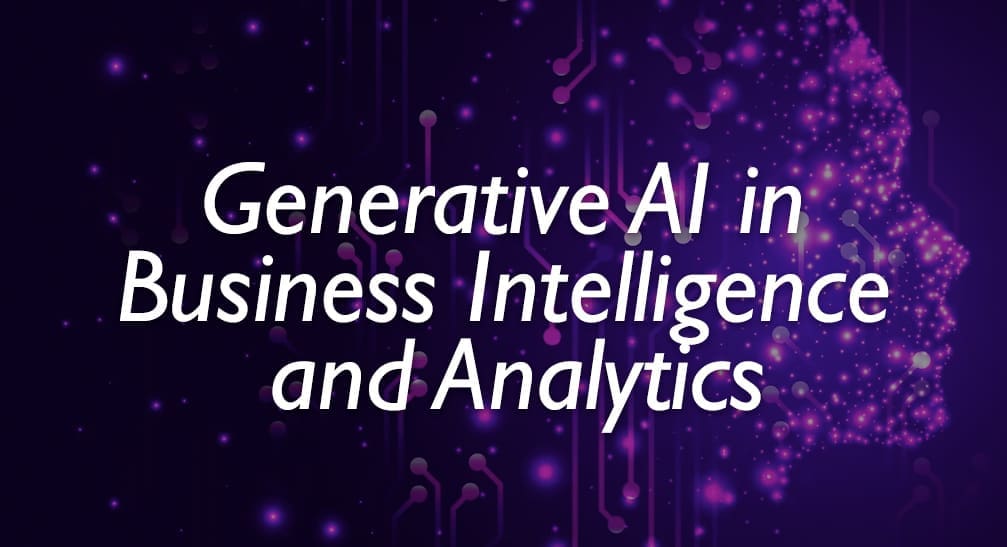There’s no question most CIOs and analysts, whether focused on marketing or operations, rely heavily on data. What might be unclear is specifically how that data is being retrieved, analyzed and ultimately leveraged for better decision making. Terms such as business intelligence and artificial intelligence are not new. Both deliver value in terms of collecting and visualizing data with efficiency unmatched by manual capability. Individually, these solutions offer capabilities many organizations find powerful. What lies on the horizon, and is in fact already within reach, is discovering and implementing the complimentary nature of each.
Artificial Intelligence
Enabling analysts to compile and retrieve data in a way that facilitates deep analysis with greater speed is perhaps the key deliverable of AI. Machine learning has promised to take decision making to a new level, allowing exponential completion of mundane and complex tasks to facilitate greater outcomes. Even in its current state, is AI really delivering on that promise?
Business Intelligence
While AI strives to provide faster decision making, BI’s promise is augmenting decision making through improved analytics. It’s understood that BI is designed to deliver fast and accurate reporting, competitive analysis, and identification of market trends, among other things. Ultimately, organizations desire to turn such insight into action. The question remains as to whether BI will ultimately achieve this potential. Can AI provide BI the augmented analytics capabilities required by organizations?
Blending AI and BI with 360-degree decision-making
No matter the size or industry, organizations strive for better decision-making capability and improved outcomes. The application of AI to BI continues to develop, but that marriage has yet to mature. Organizations that used these two previously separate capabilities are now finding its combination potentially transformative.
In short, AI is poised to transform how analysts and their organizations work with information. Rather than BI providing fancy dashboards with little intelligence, AI-enabled BI can scan through a variety of information sources and help determine the good and the bad. The result is the notification of the right stakeholder with the right information in order to make the right decision at the right time.
Companies leveraging AI-enabled BI today
The idea of implementing AI-enabled BI is not far off. In fact, it’s already here, as many organizations have begun this revolution, transforming their operations with noticeable results.
ING, a Dutch multinational banking and financial services organization, has used AI-enabled BI. ING has tied payments, client credit data, and other information into a powerful tool for various departments. The sales department, for example, can use the insights gleaned from the new tool to help clients see various options in order to make better decisions. In addition, the risk department can improve the quality and efficiency of risk assessment to more efficiently determine loans and lines of credit for worthy clients.
Walmart, the operator of more than 11,000 retails stores worldwide, has also joined the AI-enabled BI revolution by incorporating SAP’s HANA. This cloud platform replicates and takes in structured data, including sales transactions and customer information, from apps, relational databases, and other sources. Due to Walmart’s complexity, the solution they’ve implemented allows the organization to process high volumes of transaction records in a matter of seconds. This allows Walmart to make faster decisions in purchasing, sourcing and transportation. This ability to more effectively analyze data through AI-enabled BI is leading to greater efficiency. It’s also resulting in better decision making and greater control of costs.
Walmart’s application of AI-enabled BI is not just for internal use. The company’s website can now make recommendations to individual consumers, based on location, availability, and other criteria. This enables Walmart to compete more effectively with the likes of Amazon and other online-only retailers.
In the heavy industry sector, General Electric is utilizing AI-enabled BI to more accurately predict the need for repairs, ensuring machinery runs at peak efficiency. The company’s process involves incorporating sensors in machinery and vehicles while connecting them to production plans. This means equipment can be digitized and effectively monitored via AI. GE’s operation takes full advantage of the IoT, where sensors communicate seamlessly with networks. The Business Intelligence solution allows for rapid monitoring and resolution of potential issues before they become full-blown problems.
The results speak for themselves
According to Gartner, “data management manual tasks will be reduced by 45% through the addition of machine learning.” In addition, “real-time analytics are integrated within a business operation will be incorporated by more than 50% of major new business systems by 2022.” Furthermore, worldwide spending on data analytics is forecast to grow to more than $104 billion by 2022.
This should bode well for organizations that believe AI-enabled BI is a tool primarily for those with very deep pockets. As the combination of the two becomes more democratized and, therefore, more affordable, more organizations should benefit from their marriage.
What the future of AI in Business Intelligence holds
According to the TDWI Best Practice Report, BI and Analytics in the Age of AI and Big Data, organizations are highly interested in capitalizing on innovations in AI, big data, and cloud-based services. Almost three quarters (74%) of organizations hope to invest in the newest technologies in order to improve operational efficiency. They are also not interested in using only those existing business intelligence solutions for tasks such as reporting and analytics. Most organizations want to significantly enhance them or move completely to new solutions. Therefore, AI-enabled BI is a worthwhile opportunity for many.
The prevalence of big data can sometimes seem overwhelming. In addition, there appears to be an estimated shortage of about 1.5 million big data analysts capable of making knowledgeable decisions based solely on data. That’s why AI and its machine learning capability are at the forefront of what organizations desire. Companies that successfully implement AI-enabled BI will have a significant advantage over their competitors in terms of speed, cost, efficiency, and capability.
Education will help fuel the adoption of AI-enabled BI applications. Because AI requires context and human input to continue its maturity, opportunities for wider application will come. For now, we can look to those organizations currently implementing and learn from their experiences.


